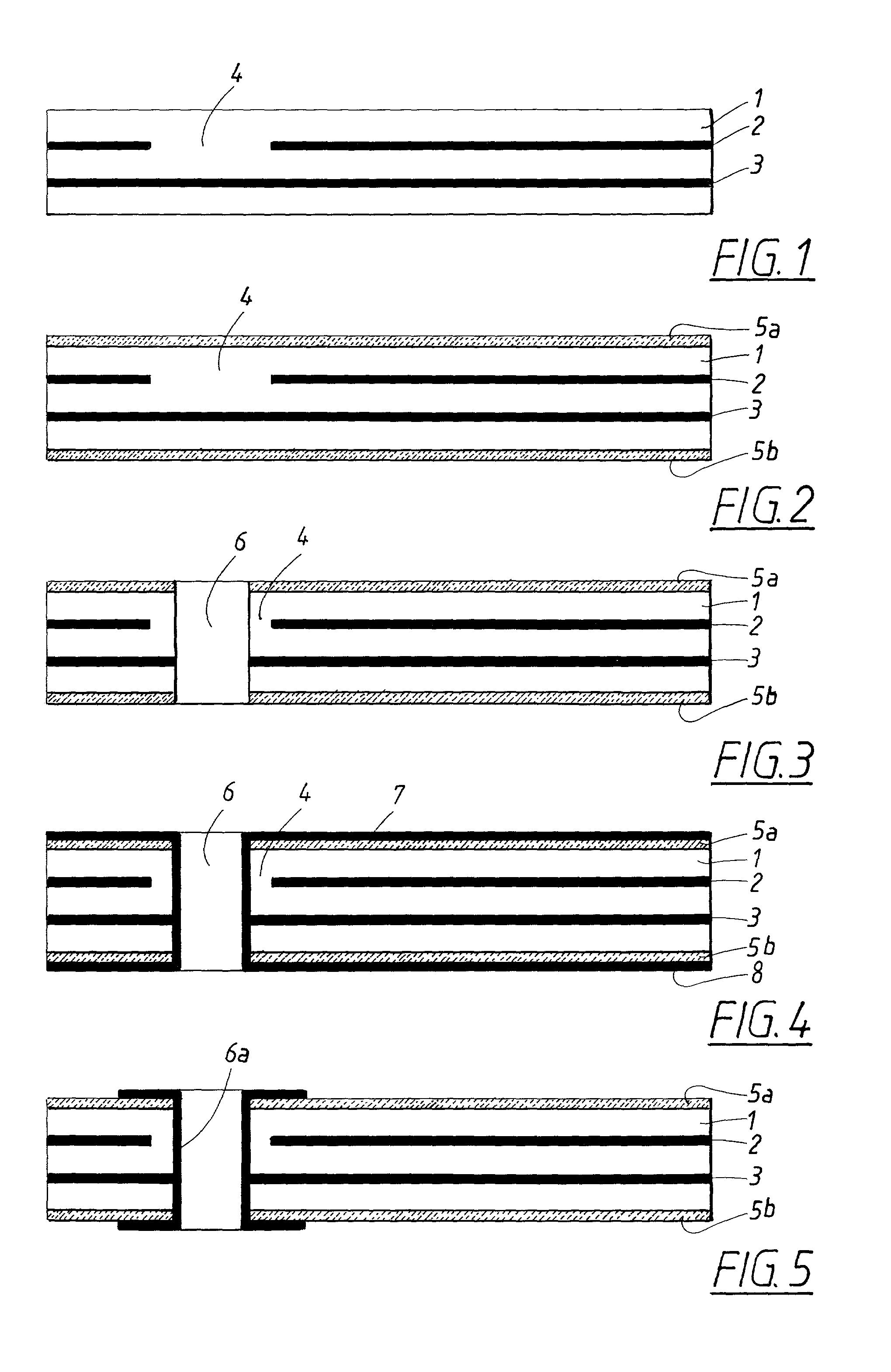PCB and method for making PCB with thin copper layer
- Summary
- Abstract
- Description
- Claims
- Application Information
AI Technical Summary
Benefits of technology
Problems solved by technology
Method used
Image
Examples
Embodiment Construction
[0013] With reference to FIG. 1, the invention includes a laminate 1 made of glass fibre-filled epoxy. Included in the glass fibre laminate are two inner conductor layers 2 and 3. The conductor layer 2 is provided with an insulating hole 4 for subsequent drilling through without contact. The percentage of glass fibre / epoxy in the glass fibre layer is suitably 75 / 25, but glass contents as low as 70% are possible. With this high glass fibre content, a linear expansion coefficient as low as 9-10 ppm / .degree. C. is achieved, which is to be compared with the more usual 16-18 ppm for conventionally used circuit board laminates with glass fibre contents of 40-60%. A low linear expansion coefficient is desirable when the copper layer is thin, down towards 18-20 .mu.m, which is in turn the case when it is necessary to etch narrow conductors on account of an advanced degree of miniaturization. It is well known that etching narrow conductors requires a thin copper layer. However, with the abov...
PUM
| Property | Measurement | Unit |
|---|---|---|
| Fraction | aaaaa | aaaaa |
| Thickness | aaaaa | aaaaa |
| Time | aaaaa | aaaaa |
Abstract
Description
Claims
Application Information
 Login to View More
Login to View More - R&D
- Intellectual Property
- Life Sciences
- Materials
- Tech Scout
- Unparalleled Data Quality
- Higher Quality Content
- 60% Fewer Hallucinations
Browse by: Latest US Patents, China's latest patents, Technical Efficacy Thesaurus, Application Domain, Technology Topic, Popular Technical Reports.
© 2025 PatSnap. All rights reserved.Legal|Privacy policy|Modern Slavery Act Transparency Statement|Sitemap|About US| Contact US: help@patsnap.com

